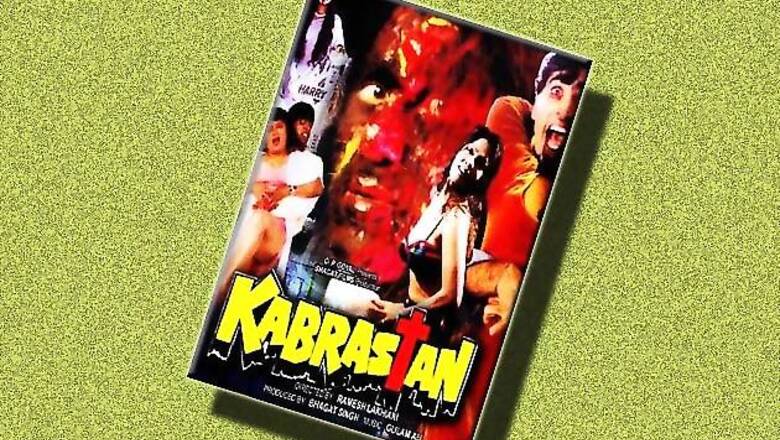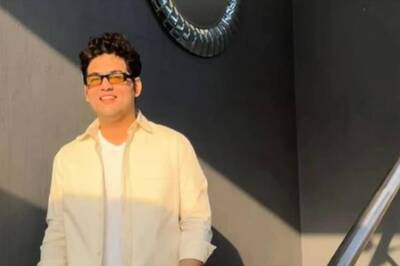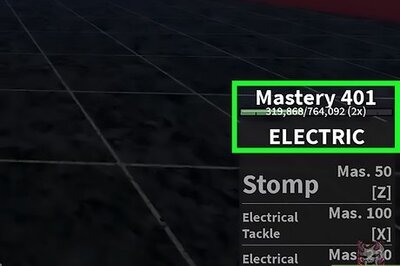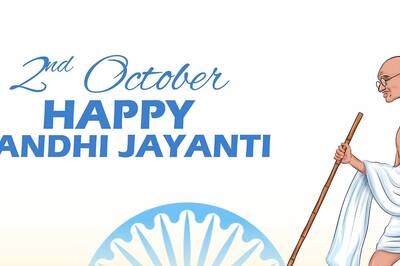
views
Filmmaker Mohan Bhakri was determined to create a convincing shot of a skeleton coming back to life during the shooting of Roohani Taaqat in 1991. He set up an elaborate pump system to create the effect and used a goat's heart. But the organ was too small and did not give the desired effect. His assistant then managed to procure a buffalo heart. Just as everything was ready and they were about to shoot a stray dog ran away with the buffalo heart.
Many of us watch retro Bollywood monster flicks for the laughs and poor special effects but we seldom wonder about how this subtle art of how unintentional humor is created. Making a film on a shoestring budget takes enormous amount of creativity. For example, Mohan Bhakri in his earlier film Kabrasthan (1988) had tried to cut down the cost of make up by viewing the events through the eyes of the monster. Unfortunately, the audience was totally confused and the result again was a delightful comic treat.
But we have seldom pondered over the fact that besides the Ramsay Brothers horror filmmakers in India have largely not been able to make truly professional films due to severe budgetary constraints. The Ramsays too made low budget films but they struggled relatively less than directors who had jumped on their bandwagon. It will be grossly incorrect to say that Bollywood has not seen good horror films but that's not what the article is about. My piece is about something altogether different.
I want to talk about creativity rising out of financial crunch. The art of coming up with innovative solution; in fact, we have a fantastic word in Hindi to describe it. Jugaad. The word is used often but we seldom understand the relevance of it as an art form. It's not easy to come up with innovative solutions or morph something potentially scary or serious into humor. Yes, I argue unintentional humor takes talent and is often underappreciated. However my focus is to not only talk about creation of humor but also add events and stories that lead to these situations.
I will start with two anecdotes of the famous Brazilian horror filmmaker Jose Mojica Marins popularly known as Coffin Joe. Coffin Joe was famous for using actual tarantulas and snakes on his actors and in his film This Night I will Possess Your Corpse he used popcorn as snow and plastered real actors on the wall to create a truly disturbing image of hell. Needless to mention it effectively conveyed the vision of hell but it was low cost too. Plastering real people cost less than finding artificial body parts and plastering them plus it could have never created the same effect.
Undoubtedly, Coffin Joe's methods were questionable but his special effects were special and not always in a good way. Coffin Joe's most significant story of creativity was in the film Awakening of the Beast where he used human buttocks as faces and even painted eyes and top hat on them. I don't know how amused the audience was but one simply can’t deny the creativity and perhaps in a rather subversive way it is hilarious. Coffin Joes' films are not unintentionally humorous but he mastered the art of making films under severe financial limitation and no one has been able to match that kind of innovative ideas. No one defines the term Jugaad as effectively as him.
I will to move back to Indian cinema again. Let me begin with Joginder Shelly's film Pyasa Shaitaan. The film has Kamal Hassan playing the devil's minion whereas Joginder plays the devil himself. The opening scene required the actress Madhu Malhotra getting raped.
Instead of hiring an actor and going through an elaborate rape scene Joginder used a tree to rape her. There is a shot of Madhu Malhotra spreadeagled, her hands tied with branches and a branch slowly crawling towards her legs and thighs. One has to give Joginder credit for coming up with such a unique idea. Pyasaa Shaitaan is filled with this kind of interesting time-saving rape scenes. There is another scene where actress Bina is raped but it is done in a jiffy as the devil strips her with his demonic powers and presents the audience with an obvious body double in underclothes.
In the film Bhoot hi Bhoot when the protagonist is confronted by an evil spirit he simply fails to find anything that will help him to fight the ghost. In sheer desperation he picks up a car tyre wench and holds it up like a cross. Needless to say it works and the evil spirit in cheap rubber mask vanishes away. The film is directed by Boss. I have to admit Boss was indeed creative and innovative. He found interesting, relatively benign and inexpensive ways to execute the killings in the film. In one scene a victim possessed by the evil spirit picks up a bolder and smashes it on his own head.
Nothing gruesome, gory and no elaborate action; a wholesome shot written just to fit the budget.
Location is another facet that makes low budget flicks creative. Hammer Studios in 1965 to save money produced Dracula: Prince of Darkness and Rasputin the Mad Monk 'back to back on the same sets with the same cast'. (Dixon,100). This was no exaggeration. Just four days after the completion of Dracula: Prince of Darkness the shooting of Rasputin begun. The sets were hardly re-propped and this quick churning out of horror films with similar ambience became the trend for Hammer Studio horror films.
Hammer studio was very conscious of their budget and cut costs wherever possible.
Horror filmmakers in India too face severe financial shortage and one can see that in their choice of locations. Ramsay films can be easily identified often because of their similarity of locations. However, similar location is not a handicap because it promotes creativity and even allows the filmmaker to encourage the audience to imagine.
Let's start with the forest. A novice audience might be totally taken aback by what is referred to as the deep, dark woods because they will see only handful of trees and a locale that suspiciously looks an inexpensive suburban resort. If they are attentive they might even catch a glimpse of a swing or a playground slide but as I mentioned earlier low budget films heavily bank on the audience’s imagination. This forest appears in numerous films. In some films it is the abode of the witch, in some it is the forest of Dracula or a forest cursed by an evil magician.
The same 'forest' often changes to a picnic spot, or a rich man's garden even becomes a mendicant's hermitage. The most important achievement here is to use the exact same space in numerous ways. Our filmmakers also follow the Hammer Studio pattern and spend very little money on propping the place and shoot films back to back often using the same actors.
There are also clever filmmakers who understand the value of buy one get one free. Some of the films are shot in the actors’ house. Recently, I was talking to actor Amrit Pal who had worked in low budget films. Not only did he receive very little money for the film his house too was used as a shooting venue. In fact, a vast majority of the filmmakers spend very little on location.
Very few of us realize that there are often incredible stories behind the films we like to laugh at. Only these stories are not told because these are films that have fallen out of the mainstream sieve and have been branded as 'crap'. B
But don't forget crap is very important. Don't agree? Well, the Tucson Garbage Project has taught us some incredible stuff about North American lifestyle. Seriously, crap is of great value as Cuban filmmaker Jorge Molina said, "I learn more from bad films than good films. The bad ones let you understand what you shouldn’t do." I don’t know if I agree with him wholeheartedly but 'bad' films have plenty to teach and offer us.
References:
Tombs, Peter. The Beast from Bollywood. Fears Without Frontiers: Horror Cinema Across the Globe (ed Schneider, Steven J), 2003 (243-253)
Barcinski, Andre. Coffin Joe and Jose Mojica Marins: strange men for strange times. Fears Without Frontiers: Horror Cinema Across the Globe (ed Schneider, Steven J), 2003 (27-38)
Dixon, Wheeler Winston. History of Horror, Rutgers University Press, 2010.####




















Comments
0 comment